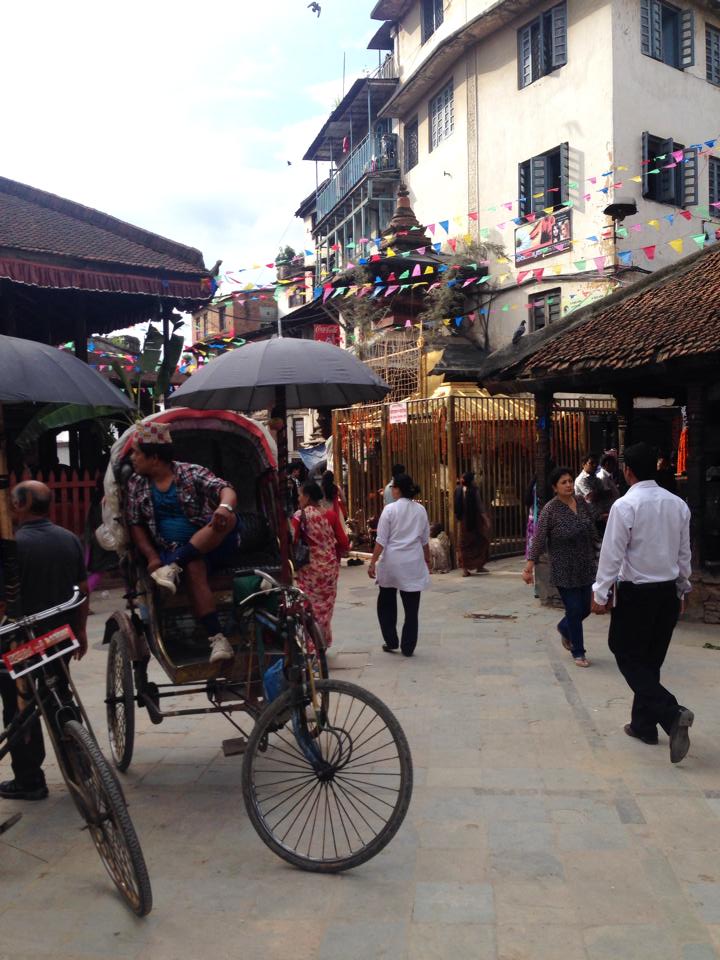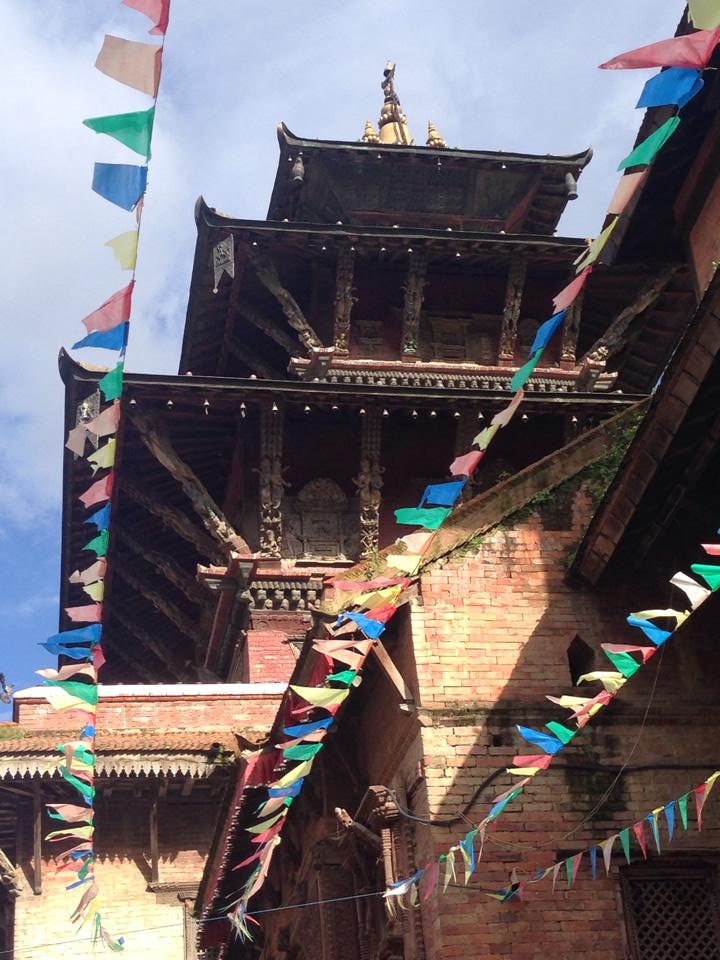Nepal’s famed Boudhanath Stupa, which was later damaged in the earthquake. Image by Colleen Hagerty.
With its endless array of historic temples, rich religious culture, and — no big deal — Mount Everest (the highest peak on Earth), it’s no wonder Nepal has been a backpacker favorite for decades. In fact, over 790,000 tourists from more than 28 countries visited the Asian country in 2014 alone!
But in April, tourists and locals experienced an unfathomable tragedy when an earthquake close to the country’s capital city created mass devastation. More than 8,000 lives were lost, while countless historic and religious sites collapsed into rubble.
Having visited Nepal just last summer…
…seeing the photos of the destruction was not just devastating but also incredibly shocking. It’s so hard to believe that many of the sites that took my breath away no longer exist, and the plight of the kindhearted people that helped direct me through the bustling alleyways of Kathmandu has tugged hard at my heartstrings.
So I’ll admit this post is a bit of a personal mission: Not only do I want to share with you how the situation has progressed in the months since the tragedy, I also want to tell you how you can help.
Your Nepal Primer
- Nepal is a landlocked country located in Southeast Asia between India and China.
- Its capital is Kathmandu.
- With an estimated 40% of its people living in poverty, Nepal is one of the world’s poorest countries.
- Its currency is the Nepalese rupee.
- Nepalis are very religious people, with more than 80% of the population identifying as Hindu.
- Nepal is home to the Himalayas mountain range, which includes 9 of the 10 highest peaks in the world. (Yes, that includes Mount Everest!)
- It is a newly democratic nation, with its first (and current) president, Ram Baran Yadav, elected in 2008.

Tell Me More About the Earthquake
On April 25, 2015 a 7.8-magnitude earthquake struck just 48 miles outside of Kathmandu, wreaking havoc on the country’s vulnerable infrastructure. This major event was followed by a number of severe aftershocks.
Along with the thousands that died, thousands more locals and tourists were injured, and many residents lost their homes. Much of Kathmandu’s historic districts were left in ruins, including the city of Bhaktapur.
Less than one month later, on May 12, a second earthquake struck 76 miles northeast of Kathmandu near Mount Everest. Nearly 2,000 more people were injured as a result of this 7.3-magnitude quake, and it set back rescue efforts significantly in the area.
Officials Say…
While many major tourism sites reopened to the public in June, the rebuilding efforts are still far from finished. In fact, the Nepali government believes it will take at least five years and billions of dollars to repair the damage.
With tourism making up nearly 10% of Nepal’s gross domestic product and employing more than 1 million people, it’s no surprise the country is eager to welcome back visitors, especially as the lucrative trekking season draws nearer. However, the U.S. State Department and the U.S. Centers for Disease Control are both still currently advising against non-essential travel to the country, citing concerns of potential aftershocks, unreliable infrastructure, and potential transportation complications.
Still, the Nepali government is quick to assure tourists that of the country’s 75 districts, only 14 were affected, with some major tourist destinations, including Lumbini, the birthplace of the Buddha, and Chitwan National Park left unharmed.
As with any trip, it’s also important to factor Nepal’s weather pattern into potential travel plans to the country over the upcoming months. Summertime is monsoon season for Nepal, meaning daily heavy rains. As the CDC notes, monsoon season can also mean higher instances of food- and water-borne diseases.

And Here’s How You Can Help
This fantastic roundup from The Guardian lists many of the charitable organizations that have started collections and projects aimed at helping Nepal and its people in the recovery efforts.
If you know of other reputable organizations offering aid, feel free to share!
What Do You Say?
I want to hear from you! Are you planning or considering a trip to Nepal? Have you recently visited or have friends or family in the area? This advice may be invaluable to your fellow travelers, so be sure to share your experience in the comments.
